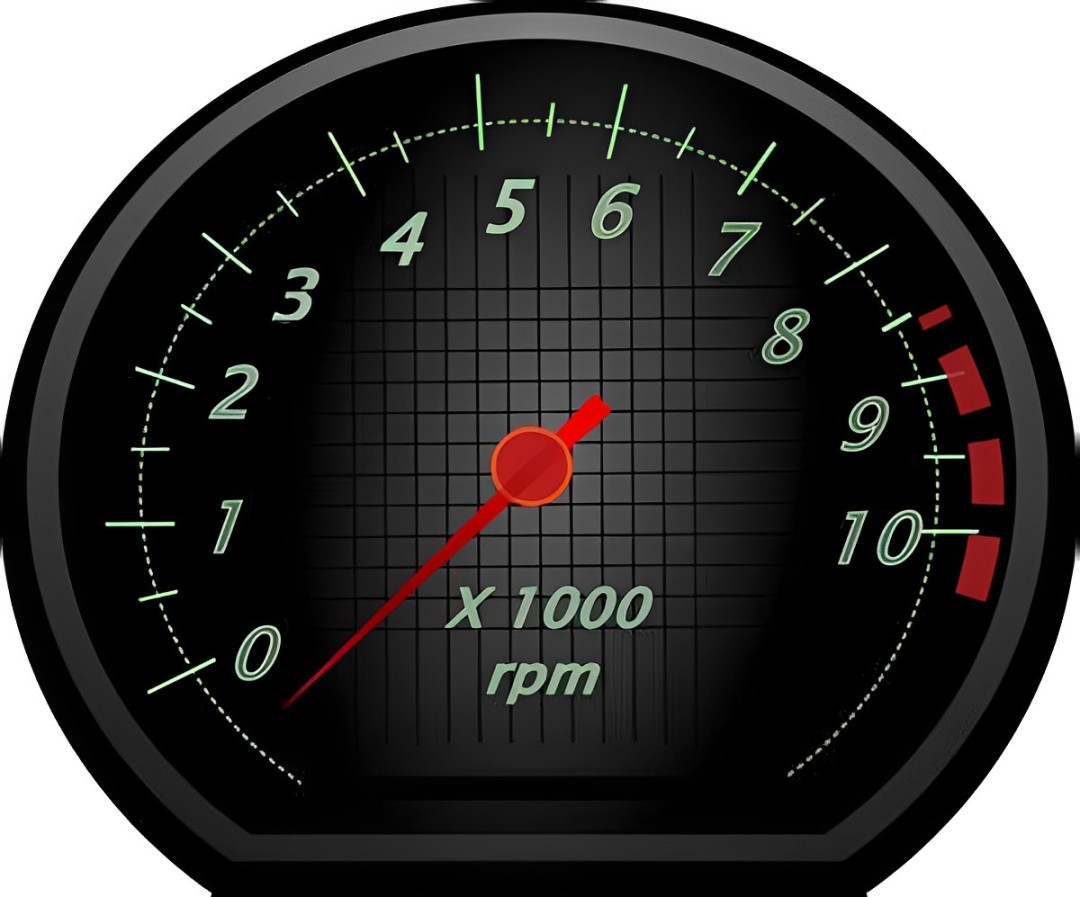The RPM meter measures the number of revolutions or rotations that occur inside the engine every minute. The RPM meter contains numbers (1,2,3,…), each number indicating 1,000 RPM. So, if a car’s RPM speedometer shows 3, the car must be running at 3,000 RPM.
Related: What to Do If the Car Doesn’t Start?
What is the full form of RPM?
The full form of RPM is Revolutions per Minute. More RPM means more speed or power produced by the engine. Although RPM is an important factor regarding a car’s performance, many drivers may not know much about it.
However, you need to understand the importance of RPM to determine the condition of the transmission and the fuel consumption of your car.
How important is RPM in a car?
RPM is extremely important in manual transmission cars. However, for vehicles equipped with an automatic transmission, paying attention to engine RPM is not so important because the vehicle will automatically calculate the number of engine RPM and control the gearbox accordingly to decrease or increase speed.
By displaying revolutions per minute, the RPM meter indicates when the driver should shift to a higher or lower speed. Using RPM to shift gears can help prevent your engine and transmission from being damaged and overheating.
Gear changes will be smoother while driving if you follow the RPM readings exactly. RPM helps understand the operation of a car engine, thereby allowing timely maintenance and extending the life of the engine.
How does RPM affect a car’s performance?
RPM is proportional to the vehicle’s fuel consumption. Therefore, lower RPM means less fuel consumption. So you can drive more economically by maintaining the correct engine speed.
Using RPM on Manual Transmission Cars
On manual transmission cars, the driver must pay attention to RPM and shift gears accordingly. While it may seem fun to constantly check speed limits, it will lead to increased engine damage and higher fuel consumption.
Instead, you should balance your driving by using the tachometer for consistent, long-term performance. Shift gears early instead of waiting for the engine to roar. Likewise, shift gears quickly while reducing vehicle speed to achieve better fuel efficiency.
Using RPM on Automatic Cars
With an automatic transmission, the car can automatically shift from a lower gear to a higher gear when accelerating hard. Likewise, an automatic transmission vehicle will maintain a lower gear when the driver helps to maximize the performance of the vehicle and ensures greater fuel efficiency.
What is the normal RPM of a car?
The normal speed range of a car on the highway is usually between 1500 RPM and 2000 RPM. The idling speed is between 600 RPM and 1000 RPM. A diesel engine usually idles at around 750 RPM, while it travels at 110 km/h in 6th gear at 2000 RPM. However, the gasoline engine rotates at 6,000 RPM at high RPM.
What is RPM fluctuation and how to overcome it?
Fluctuation of RPM is a condition in which your vehicle’s engine RPM frequently increases or decreases for no apparent reason.
Old spark plugs:
When the spark plugs are worn out, engine ignition becomes difficult. This is when the RPM can be increased or decreased frequently to compensate for the spark plug.
Vacuum leak:
Vacuum line leak causes loss of vacuum in the engine. This affects the engine’s performance, causing engine RPM to fluctuate.
Carburettor Problems:
A clogged or dirty carburettor can restrict fuel delivery to the engine, which can cause RPM fluctuations.
Faulty accelerator pedal sensor:
Problems with the accelerator pedal sensor can cause RPM to rise and fall even when accelerating.
Fuel injector problems:
Clogged or dirty fuel injectors can cause the vehicle to accelerate erratically, making it difficult for the vehicle to maintain a steady speed.
Transmission fluid leak:
If there is a fluid leak in the transmission, the transmission band becomes slippery, making it difficult to achieve high speeds. As a result, the engine starts running at a higher RPM to compensate.
Clogged air filter:
The vehicle’s engine may run unevenly due to a clogged air filter. Restriction of the air supply results in an unexpected decrease or increase in RPM.
Faulty idle air control valve:
With a faulty idle air control valve, you may notice that the RPM increases and decreases steadily, even when not accelerating. Most of the problems mentioned above are not very complicated. You can easily solve them without having to spend too much money. However, ignoring engine speed fluctuations can lead to serious problems. Therefore, you should resolve the mentioned issues as soon as possible.
Below are the steps to take to resolve the engine speed fluctuation problem.
- Step 1: Make sure the engine is properly adjusted.
- Step 2: Check for any leaks in the air intake system.
- Step 3: Make sure the throttle body is free of obstructions.
- Step 4: Replace dirty or worn spark plugs.
- Step 5: Check the engine vacuum line for leaks.
- Step 6: Replace the dirty or clogged fuel filter with a new one.
- Step 7: Install a fuel stabilizer in the fuel tank to prevent corrosion and clogging of the fuel system. This is a necessary step, especially if you want to store your car for a long time.
- Step 8: Check and repair ignition system errors.
- Step 9: Also check the engine for low compression. You can carry out the initial inspection yourself if you have enough knowledge about the parts. However, it is best to take your vehicle to a qualified professional facility for a thorough and accurate diagnosis.
Read Also:

